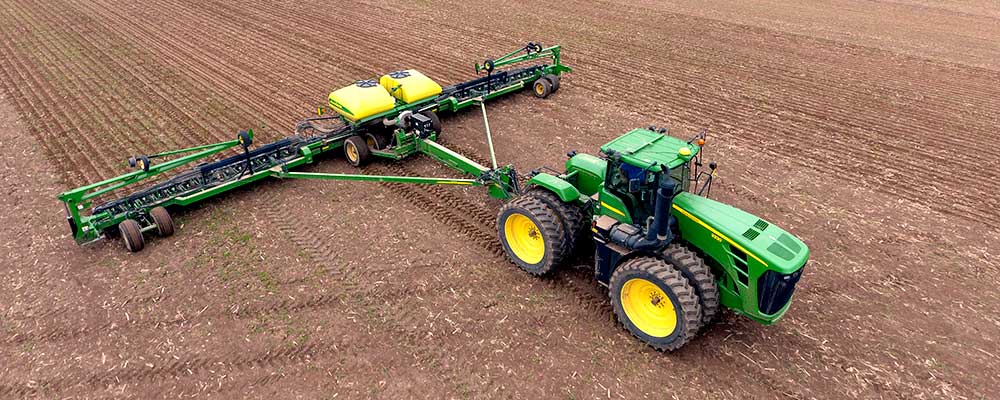Vehicles are the largest farming equipment and by far the most important. Trucks are the primary examples when it comes to farming vehicles. There are others that are equally important.
Tractors
Tractors are useful for both small scale farmer and their large scale counterparts. This is because they come in a range of sizes that is suitable for various farming operations.
There are various types of tractors namely compact tractors, wheeled tractors, track tractors, orchards tractors and so on. Compact tractors are small but high-powered and can help with basic farm functions. They are appropriate for material handling, as well as tight spaces where traditional tractors won’t fit in.
Wheeled tractors can help with tilling, pulling and handling. They have a range of options involving lifting capacity, cab style and horsepower. There’s also track tractors mounted with tracks of rubbers, for ploughing fields. They have more horsepower and make for smoother rides.
There is also orchard tractors adapted to work on orchards only. They are slender in size and can easily fit between a line up of trees. While they do, they deliver quality landscaping and maintenance of the orchards.
Harvester or Combine
Grain farmers need combines, or harvesters in harvesting crops. Small scale farmers dealing in grains can also benefit from using a combine. Harvesters use a mass of belts, blades wheels and gears to convert cereals into grain. This occurs through three processes:
- Reaping: This means cutting the plant with the help of a header cutter bar and reel. This is carried out on the combine. It’s for the header to gather crops, and for the reel to push the crops to the cutter bar and cut the crops from the bottom.
- Threshing: Here, edible areas of the crop are separated from the parts that are not edible. This occurs by way of a threshing drum that beats the crops that has been cut to keep the grains separate from the stalks.
- Winnowing: This is where the light chaff is separated from the grain, usually when still in a threshing drum. You can then use sieves to separate the grains from the strain.
UTV or ATV
UTV means utility vehicles, and ATV means all terrain vehicles, also called four wheelers. The smaller vehicles can easily move across rough terrains even better than most road vehicles and faster than an average tractor.
However, these vehicles will need small trailers, mowers and spreaders to work more effectively.
Plows
These are attachments to large tractors dragging behind a tractor. They have a their long blades you can used for cutting furrows into soils. The process turns and loosens the soils and eliminate unwanted surface vegetation.
In the course of getting the soil prepared for planting, plowing is the first step. Each plow varies with soil conditions, crop and soil types. We have moldboard plows, disc plows and chisel plows.
Balers
These are important for collecting corn stalks, and straw and hay. Generally, they exist in three forms.
- Round balers: They role hay into circular shapes and wrap them.
- Square balers: They collect straw, stalks and hay into compactors. The compactors serve to pack and press the material to form a square shape. They come in multiple sizes.
- Large Balers: These work like average square baker but handles much higher volumes for industry farms.
These are only a few of the available farming equipment you procure with our brokering services.
We Can Help
Rural Buying Service can help you get the best deals to access premium equipment at quality rates and prices.
Contact us today to get started.




